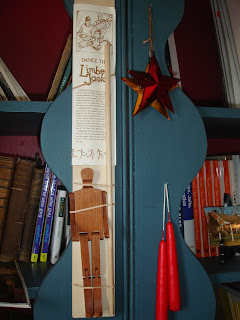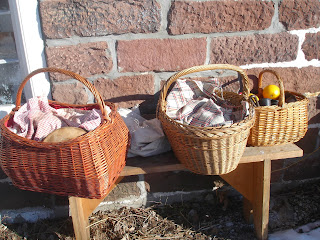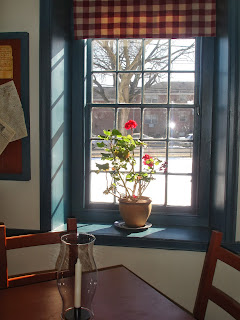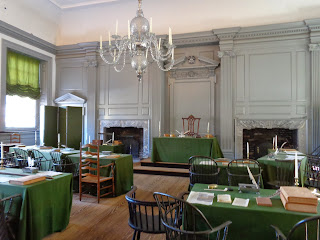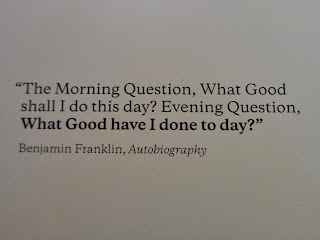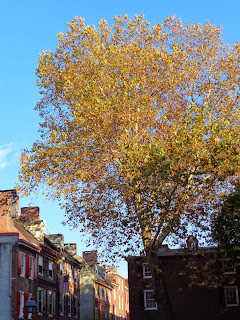“I thought about adults. I wondered if that was true: if they were all really children wrapped in adult bodies, like children's books hidden in the middle of dull, long adult books, the kind with no pictures or conversations." - Neil Gaiman's The Ocean at the End of the Lane.
As I reviewed my list of storytellers this year, I surprised myself even by how many young adult and children's books were on my list. I'm 38 years old. Several are classics I simply missed in childhood, others more recent. I only transitioned from an occasional to avid reader in the past few years, the kind that with a happy heart ponders, "What should I read next?" For whatever their reasons, these storytellers entered my life when they needed to, simply telling me, now is their time to be heard. And here is my time to share them with you, along with a few favorite passages and how the book came into my life (often passed on by another reader secondhand) and the cost. I'm including images from my June journey to Washington state, which I'll be posting in a diary series in the New Year.
Neil Gaiman's Ocean at the End of the Lane, free, the library. The book club at work read this. I've read Coraline and The Graveyard Book and loved this as much, about a man returning to his childhood home in England remembering mysterious events as a child.
This storyteller reminds me of why we should remember the joy of childhood.
"I do not miss childhood, but I miss the way I took pleasure in small things, even as greater things crumbled. I could not control the world I was in, could not walk away from things or people or moments that hurt, but I took joy in the things that made me happy.”

What made me happy? Memories like making mashed potatoes with my grandfather on summer visits to Switzerland and eating them on blue and white dishes, like these at the Pioneer Farm Museum in Eatonville, Washington.
"There was toast, too, cooked beneath the grill as my father cooked it, with homemade blackberry jam. There was the best cup of tea I ever drunk. By the fireplace, the kitten lapped at a saucer of creamy milk, and purred so loudly I could hear it across the room.
I wished I could purr too, I would have purred then."
"Adults follow paths. Children explore. Adults are content to walk the same way, hundreds of times, or thousands; perhaps it never occurs to adults to step off the paths, to creep beneath rhododendrons, to find the spaces between fences. I was a child, which meant that I knew a dozen different ways of getting out of our property and into the lane, ways that would not involve walking down our drive."
A path into a magical forest in Rainier National Park.
This storyteller taught me about art, for we are never too old to learn, and reminded me about the wonder of flowers.
Linnea says "I love flowers. I'm even named after a flower, and I'm interested in everything that grows."
Linnea visits her upstairs neighbor, the retired gardener Mr. Bloom, who shares his book on Claude Monet, and they travel to Paris to view Monet's paintings, and to Giverny to see his gardens. Historian David McCullough said, "The transforming power of a single book is beyond our reckoning." I think of Mr. Bloom sharing his book with Linnea and how it transformed her world. It transforms mine too. I can't make it to Giverny, but have a piece of it when I look at this book. There is a charming short film made of this book available on Netflix.
"I never could have imagined all this! This big and this many flowers!
If we could have looked at the garden from above, it probably would have looked like stripes - stripes of gravel paths and rows of flower beds in different colors. Mr. Bloom knew the names of almost all the flowers. In the blue row there were flax flowers, bluebells, delphiniums, foxgloves. In the pink row there were peonies, hollyhocks, and roses."
Foxgloves outside a cabin in Ashford, Washington.
Across the Wide and Lonesome Prairie: The Oregon Trail Diary of Hattie Campbell, by Kristiana Gregory, free, the library. I love the Dear America series, which tells in diary format different major events throughout U.S. history. I wish I could say I was a minimalist with few possessions, but my home is filled with items that remind me of things and places I love: the Southwest, Paris, birds, candles, books, tea cups and pots galore, and such. But I think of our pioneers traveling over rugged lands and leaving their possessions behind them, including those who perished on the unforgiving trail. When I read this passage, I recall what I told my husband, the only thing of real value in our home is our dogs (and us humans too, of course).
This storyteller reminds me in spite of the joy our possessions can bring us, what really matters most.
"I opened the abandoned trunk one last time, to touch the calico my sisters had wore. How I wanted their dresses for my own, to remember them by, and also to look lovely as they had. Ma came up and gently closed the lid.
"It's time to move on, Hattie."
When the wagons pulled out it looked like we left behind a general store. There were piles of books and plates, a coffee mill, clothes, tools, and a roll-top desk. A few women wept to see their treasures thrown out. Even I had a catch in my throat. What will be left when we get to Oregon? I asked Ma. How will we make a home?
Mama said, "Don't worry, Hattie. Our home is our family, not our possessions."
A wagon outside the Stage Stop Museum in Washington.
Stream and Shale Coloring Storybook, by J.J. Brown, $12, Amazon.com, a story for younger readers which quotes the great American conservationists John Muir and Rachel Carson throughout. Trees are characters as much as people are in the works of J.J. Brown. There's the friend I call "Jennifer" and there's the writer "J.J." Both friend and writer shares my love of the natural world and understands our need to preserve it for future generations. Stream and Shale follows her day trip to view sites in rural Pennsylvania adversely impacted by "fracking" the process to extract natural gas. When you seen the abundance of commercials promoting natural gas, ask, "Why?" Her book Brindle 24 explores fracking and is recommended for young adult and older readers.
This storyteller reminds me to be a caretaker of our Earth, for current and future generations and all the inhabitants, and not be silent and raise my voice. Also to understand the greater life cycles at play. From Stream and Shale...
"Brown apple trees in the orchards are bare this time of year. They wait for spring. The twisted apple branches are as naked in early March as they were in deep midwinter. In the older wooded areas, trees stand tall. They are gray sentinels silently witnessing the changes around them.
Light snow begins to fall. A fine and steady mist drifts along a patch of Paper Birch trees. The trees are camouflaged by their white bark. Last year's leaves lay at the base of bare trunks. The water in a lake is frozen into white ice at the bottom of a valley. This lake is lined with pine trees growing thickly around it. Of all the trees, only the pines breath fresh life into the forest now. They share their pleasing fragrance and deep green color."
Breathing in the pleasing fragrance and taking in the deep green color, and thankful for their life force. Trees enveloping the Carbon River in Washington.
The Game of Silence, Louise Erdrich, $7, the Well Read Book Store, Hawthorne, New Jersey. The second book in the "Birchbark House" series set in the 1800s of a young girl Omakayas and her tribe who is displaced by the pioneers who want their ancestral land.
There's a local tribe in New Jersey, the Ramampough Indians, who are often the subject of mockery for eating squirrel. I find it more appalling that people eat factory farmed animals from McDonald's (many whom don't even get out of their car to purchase) than people who live off of the land. There's something to be said for self-sufficiency in this age and maintaining older ways.
A local article noted, "As suburbs grew around them, they have continued to live simply, growing their food in backyard gardens and hunting and fishing on the mountains. Despite sometimes living below the poverty level, they open their homes to distant relatives, ensuring a Ramapough never goes hungry or homeless, but often living 10 or 12 to a house."
Part of the Ramapough's land has been polluted by toxic paint sludge dumped decades ago by garbage haulers for the Ford Motor Company, and the fight over cleaning up the poisoning of the land continues as I write this. As Steve and I talked about planting a vegetable garden next year, we're also talking about getting our soil tested, and worry about the pungent odor in our air we smell far too often and how it settles into us and everything around. When will people start to care about the environment, only when their land is polluted, and start reconnecting with their food sources?
This storyteller reminds me of the beauty of the Native American culture, and how much we can learn from their ways.
"Nokomis's garden was very old. She had inherited it from her mother, who had inherited it from hers. The earth had grown rich from generations of careful replenishment. All around the edge of the garden a stout fence of driftwood, hung with cheerful rags of clothing, protected the earth and the tender plants. But the garden was more than the space it occupied. Its seeds, too, had been handed down for many generations. During the worst of the family's hunger, two winters ago, Nokomis had finally insisted that they eat half of her seed beans, but only because she'd saved extra. Nobody even thought of eating more. Nokomis's seeds, after all, were the future."
Seeds from an "urban farmlette" Steve and I stayed at in Seattle. I love the saying on the packet's bottom, "Set a table in the garden" by Renee Shepherd.
Other storytellers in no particular order:
Charlotte in Giverny, Joan MacPhail Knight and Melissa Sweet, $4, Better World Books.
Charlotte in Paris, Joan MacPhail Knight and Melissa Sweet, $15, Amazon.com.
As I reviewed my list of storytellers this year, I surprised myself even by how many young adult and children's books were on my list. I'm 38 years old. Several are classics I simply missed in childhood, others more recent. I only transitioned from an occasional to avid reader in the past few years, the kind that with a happy heart ponders, "What should I read next?" For whatever their reasons, these storytellers entered my life when they needed to, simply telling me, now is their time to be heard. And here is my time to share them with you, along with a few favorite passages and how the book came into my life (often passed on by another reader secondhand) and the cost. I'm including images from my June journey to Washington state, which I'll be posting in a diary series in the New Year.
Neil Gaiman's Ocean at the End of the Lane, free, the library. The book club at work read this. I've read Coraline and The Graveyard Book and loved this as much, about a man returning to his childhood home in England remembering mysterious events as a child.
This storyteller reminds me of why we should remember the joy of childhood.
"I do not miss childhood, but I miss the way I took pleasure in small things, even as greater things crumbled. I could not control the world I was in, could not walk away from things or people or moments that hurt, but I took joy in the things that made me happy.”

What made me happy? Memories like making mashed potatoes with my grandfather on summer visits to Switzerland and eating them on blue and white dishes, like these at the Pioneer Farm Museum in Eatonville, Washington.
"There was toast, too, cooked beneath the grill as my father cooked it, with homemade blackberry jam. There was the best cup of tea I ever drunk. By the fireplace, the kitten lapped at a saucer of creamy milk, and purred so loudly I could hear it across the room.
I wished I could purr too, I would have purred then."
"Adults follow paths. Children explore. Adults are content to walk the same way, hundreds of times, or thousands; perhaps it never occurs to adults to step off the paths, to creep beneath rhododendrons, to find the spaces between fences. I was a child, which meant that I knew a dozen different ways of getting out of our property and into the lane, ways that would not involve walking down our drive."
A path into a magical forest in Rainier National Park.
Linnea in Monet's Garden by Cristina Bjork and Lena Anderson, $1, estate sale. I still remember being so disappointed when my husband Steve had to go into work unexpectedly on the last day of an exhibit recreating Monet's garden in Giverny at the New York Botanical Garden. I invited my mother instead and it ended up being one of my happiest memories of a day with her. I'm so glad we shared that together since it is from her I inherited a love of flowers. I recalled our visit in "Monet's Garden: A Piece of Giverny in New York."
This storyteller taught me about art, for we are never too old to learn, and reminded me about the wonder of flowers.
Linnea says "I love flowers. I'm even named after a flower, and I'm interested in everything that grows."
Linnea visits her upstairs neighbor, the retired gardener Mr. Bloom, who shares his book on Claude Monet, and they travel to Paris to view Monet's paintings, and to Giverny to see his gardens. Historian David McCullough said, "The transforming power of a single book is beyond our reckoning." I think of Mr. Bloom sharing his book with Linnea and how it transformed her world. It transforms mine too. I can't make it to Giverny, but have a piece of it when I look at this book. There is a charming short film made of this book available on Netflix.
"I never could have imagined all this! This big and this many flowers!
If we could have looked at the garden from above, it probably would have looked like stripes - stripes of gravel paths and rows of flower beds in different colors. Mr. Bloom knew the names of almost all the flowers. In the blue row there were flax flowers, bluebells, delphiniums, foxgloves. In the pink row there were peonies, hollyhocks, and roses."
Foxgloves outside a cabin in Ashford, Washington.
This storyteller reminds me in spite of the joy our possessions can bring us, what really matters most.
"I opened the abandoned trunk one last time, to touch the calico my sisters had wore. How I wanted their dresses for my own, to remember them by, and also to look lovely as they had. Ma came up and gently closed the lid.
"It's time to move on, Hattie."
When the wagons pulled out it looked like we left behind a general store. There were piles of books and plates, a coffee mill, clothes, tools, and a roll-top desk. A few women wept to see their treasures thrown out. Even I had a catch in my throat. What will be left when we get to Oregon? I asked Ma. How will we make a home?
Mama said, "Don't worry, Hattie. Our home is our family, not our possessions."
A wagon outside the Stage Stop Museum in Washington.
Stream and Shale Coloring Storybook, by J.J. Brown, $12, Amazon.com, a story for younger readers which quotes the great American conservationists John Muir and Rachel Carson throughout. Trees are characters as much as people are in the works of J.J. Brown. There's the friend I call "Jennifer" and there's the writer "J.J." Both friend and writer shares my love of the natural world and understands our need to preserve it for future generations. Stream and Shale follows her day trip to view sites in rural Pennsylvania adversely impacted by "fracking" the process to extract natural gas. When you seen the abundance of commercials promoting natural gas, ask, "Why?" Her book Brindle 24 explores fracking and is recommended for young adult and older readers.
This storyteller reminds me to be a caretaker of our Earth, for current and future generations and all the inhabitants, and not be silent and raise my voice. Also to understand the greater life cycles at play. From Stream and Shale...
"Brown apple trees in the orchards are bare this time of year. They wait for spring. The twisted apple branches are as naked in early March as they were in deep midwinter. In the older wooded areas, trees stand tall. They are gray sentinels silently witnessing the changes around them.
Light snow begins to fall. A fine and steady mist drifts along a patch of Paper Birch trees. The trees are camouflaged by their white bark. Last year's leaves lay at the base of bare trunks. The water in a lake is frozen into white ice at the bottom of a valley. This lake is lined with pine trees growing thickly around it. Of all the trees, only the pines breath fresh life into the forest now. They share their pleasing fragrance and deep green color."
Breathing in the pleasing fragrance and taking in the deep green color, and thankful for their life force. Trees enveloping the Carbon River in Washington.
The Game of Silence, Louise Erdrich, $7, the Well Read Book Store, Hawthorne, New Jersey. The second book in the "Birchbark House" series set in the 1800s of a young girl Omakayas and her tribe who is displaced by the pioneers who want their ancestral land.
There's a local tribe in New Jersey, the Ramampough Indians, who are often the subject of mockery for eating squirrel. I find it more appalling that people eat factory farmed animals from McDonald's (many whom don't even get out of their car to purchase) than people who live off of the land. There's something to be said for self-sufficiency in this age and maintaining older ways.
A local article noted, "As suburbs grew around them, they have continued to live simply, growing their food in backyard gardens and hunting and fishing on the mountains. Despite sometimes living below the poverty level, they open their homes to distant relatives, ensuring a Ramapough never goes hungry or homeless, but often living 10 or 12 to a house."
Part of the Ramapough's land has been polluted by toxic paint sludge dumped decades ago by garbage haulers for the Ford Motor Company, and the fight over cleaning up the poisoning of the land continues as I write this. As Steve and I talked about planting a vegetable garden next year, we're also talking about getting our soil tested, and worry about the pungent odor in our air we smell far too often and how it settles into us and everything around. When will people start to care about the environment, only when their land is polluted, and start reconnecting with their food sources?
This storyteller reminds me of the beauty of the Native American culture, and how much we can learn from their ways.
"Nokomis's garden was very old. She had inherited it from her mother, who had inherited it from hers. The earth had grown rich from generations of careful replenishment. All around the edge of the garden a stout fence of driftwood, hung with cheerful rags of clothing, protected the earth and the tender plants. But the garden was more than the space it occupied. Its seeds, too, had been handed down for many generations. During the worst of the family's hunger, two winters ago, Nokomis had finally insisted that they eat half of her seed beans, but only because she'd saved extra. Nobody even thought of eating more. Nokomis's seeds, after all, were the future."
Seeds from an "urban farmlette" Steve and I stayed at in Seattle. I love the saying on the packet's bottom, "Set a table in the garden" by Renee Shepherd.
Other storytellers in no particular order:
Charlotte in Giverny, Joan MacPhail Knight and Melissa Sweet, $4, Better World Books.
Charlotte in Paris, Joan MacPhail Knight and Melissa Sweet, $15, Amazon.com.
Keeping Up Appearances: Hyacinth Bucket's Book of Etiquette for the Socially Less Fortunate, by Roy Clark, $1, the Goodwill.
The Wind in the Willows, Kenneth Graham, $1, estate sale
My Side of the Mountain, Jean Craighead George, $7, the Well Read Book Store.
The Round House, Louise Erdrich, free, the library.
The Porcupine Year, Louis Erdrich, $7, the Well Read Book Store.
American Dream, J.J. Brown, free, a gift from the author.
These Happy Golden Years, Laura Ingalls Wilder, $1, the Goodwill.
These First Four Years, Laura Ingalls Wilder, 50 cents, Housing Works thrift shop.
Laura Ingalls Wilder: A Biography, William Anderson, $7, the Wilder Homestead gift shop in Malone, New York.
O Pioneers!, Willa Cather, free, a loan from a colleague who thought I might enjoy it knowing my love of Laura Ingalls Wilder. I did so much, I bought a copy of it for my mother for Mother's Day.
Pioneer Women: Voices from the Kansas Frontier, $2, Joanna L. Stratton, the Goodwill.
The Signature of All Things, Elizabeth Gilbert, $25, Shaw's Book Shop, Westwood, New Jersey.
Fever 1793, Laurie Halse Anderson, 25 cents, Our Thrift Shop, Westwood, NJ.
Daughter of Fortune, Isabel Allende, $1, the Goodwill. I completely forgot to mention this epic tale of a young woman who follows her lover from Chile to California during the gold rush when I wrote my travel diary of Columbia, California.
The Penelopiad, Margaret Atwood, free, passed on by a friend.
Breadcrumbs, Anna Ursu, $7, the Well Read Book Store
Garden Tales: Classic Stories from Favorite Writers, with photography by Jane Gottlieb and an introduction from Martha Stewart, $4, the Buy and Sell Shop at Abram Demaree Homestead.
The Red Garden, Alice Hoffman, 50 cents, C.A.T.S. Resale Shop.
Thank you storytellers for being part of my life, for your words that are now part of me. What were your favorite storytellers of 2013? Happy reading for 2014, and Happy New Year.







